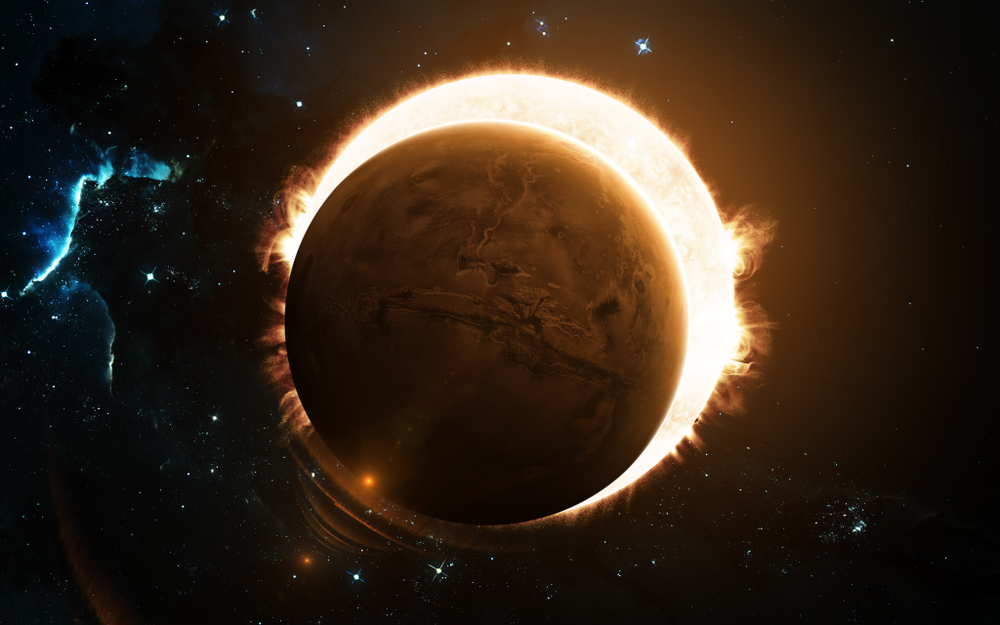You Won’t Want to Miss March’s Partial Solar Eclipse. Here’s How and When You Can See It

Most days pass in a blur—routines, responsibilities, screens glowing from sunrise to midnight. Heads stay down, focused on what’s next. But every so often, the sky offers a reason to pause.
March 29, 2025, brings one of those moments. A partial solar eclipse will stretch across skies from North America to Europe and Asia, offering a brief, brilliant reminder of how vast and precise the universe truly is.
Nature doesn’t send calendar invites, but this one deserves a mark in bold. Not because it’s the biggest, brightest eclipse in history—but because in a world that rarely slows down, it offers a rare chance to be still, to be awed, and to remember what it means to witness something real.
What Is a Partial Solar Eclipse and What Makes This One Special?

A partial solar eclipse occurs when the Moon moves between the Earth and the Sun, but doesn’t completely cover the Sun’s disk. Instead of a full blackout, only a portion of the Sun is obscured, creating a “bite” effect that varies depending on your location. The closer you are to the central path of the eclipse, the more of the Sun will appear covered.
During a partial eclipse, daylight doesn’t disappear completely, but the ambient light may dim, and shadows can appear sharper than usual. The Sun takes on a crescent shape at peak eclipse, offering a unique viewing experience—even without the totality seen in full solar eclipses.
The upcoming partial solar eclipse on March 29, 2025, is generating extra buzz because it’s being referred to as a “double sunrise.” In certain regions, particularly in parts of Europe and northern Asia, the eclipse will already be in progress as the Sun rises above the horizon. This means observers will see the Sun rise in a partially eclipsed state, followed by the gradual return of its full shape as the Moon moves out of alignment—creating the visual illusion of the Sun rising twice.
While partial eclipses happen about twice a year somewhere on Earth, this kind of timing—where it aligns with sunrise—is far less common, making it a rare treat for skywatchers. It’s a reminder of how even routine astronomical events can produce striking and memorable phenomena, depending on where and when you’re watching.
When and Where to Watch the Partial Solar Eclipse
Timing and location will shape each person’s view of the March 29 partial solar eclipse. While the event spans continents, the experience changes depending on where eyes meet the sky.
North America
In the northeastern U.S. and parts of eastern Canada, the eclipse begins right at sunrise. Cities like Portland, Maine, will see up to 64% of the Sun covered. In St. John’s, Canada, the number rises to an impressive 83%. For a few brief moments, the Sun will rise already eclipsed—its shape curved like horns piercing through morning haze.
In New York City, the eclipse starts at 6:44 a.m., peaks just two minutes later, and wraps by 7:04 a.m. Even in cities farther inland, early risers will witness the moon taking a visible “bite” out of the Sun.

Europe
Western Europe will experience the eclipse mid-to-late morning. In London, it starts at 10:07 a.m., peaks at 11:03 a.m., and ends by noon—offering over an hour of shifting light. Paris and Dublin share similar timing. Maximum coverage across Europe will range from 20% to 40%, depending on location.
Northern Asia and North Africa
Observers in parts of northern Asia and North Africa can catch the eclipse in the afternoon. Though coverage percentages are lower in many of these regions, the event still offers a rare chance to see the Sun in a different form.
Not everyone will be in the right place to witness it in person. But livestreams hosted by Timeanddate.com, NASA, and the Royal Observatory Greenwich will make the eclipse viewable from anywhere with an internet connection. No matter the location, the sky’s story remains within reach.
Catching the ‘Double Sunrise’

In some places, the eclipse won’t wait for the day to begin—it will arrive with it. As the sun peeks over the horizon, already partially eclipsed, it will appear to rise twice. First, as a crescent. Then, minutes later, as a full circle reclaims its place in the sky.
This rare alignment is what’s being called the “double sunrise.”
Eastern parts of Maine and southeastern Canada are among the few places where this illusion can be seen clearly. Locations near the Bay of Fundy, West Quoddy Head, and the St. Lawrence River offer some of the best vantage points.
To catch it, a clear eastern horizon is essential. No tall buildings. No tree lines. Just an open sky and a little patience. And since the Sun will be low, proper solar viewing glasses are even more important. Without them, even the beauty of a moment like this can turn dangerous.
The rarity of a sunrise eclipse adds weight to the moment. For many, it may be the only time in life to witness the Sun arrive with a shadow across its face.
Safety Tips for Viewing

To ensure a safe and enjoyable experience during the partial solar eclipse, follow these guidelines carefully:
- Use certified eclipse glasses: Invest in high-quality solar viewing glasses, often referred to as eclipse glasses. These glasses are specifically designed to block harmful ultraviolet and infrared rays, which can damage your eyes. Make sure to buy from reputable vendors recommended by the American Astronomical Society to avoid counterfeit products. If you’re reusing old eclipse glasses, inspect them for any holes, scratches, or tears.
- Try indirect viewing methods: For those who prefer not to use glasses, indirect viewing methods are a great alternative. A pinhole projector allows you to safely observe the eclipse by projecting the Sun’s shadow onto a flat surface. Even standing under trees during the eclipse can create unique crescent-shaped patterns in their shadows, turning the experience into an artistic delight.
- Avoid regular sunglasses: Do not use regular sunglasses to view the eclipse—they aren’t dark enough to protect your eyes from the Sun’s harmful rays. Remember that even a partial solar eclipse poses risks if viewed directly without proper equipment.
Preparation is simple, and the reward is unforgettable. All it takes is the right gear and a few minutes of care.
A Stellar Year of Eclipses in 2025

If you miss the partial solar eclipse on March 29, don’t worry—2025 isn’t done dazzling us just yet. In fact, it’s just getting warmed up. This year is shaping up to be a celestial buffet, with a lineup of both solar and lunar eclipses that promise to keep stargazers—and anyone with even a passing interest in the night sky—utterly captivated.
The crown jewel of 2025’s astronomical events is undoubtedly the total solar eclipse on September 21. Unlike the partial eclipse in March, where the moon merely takes a bite out of the sun, the September event will plunge certain areas into total darkness in broad daylight. For a few fleeting minutes, day will turn to night, the temperature may dip, and the stars could even make a brief appearance. And here’s the real treat: during this moment of totality, viewers in the eclipse’s direct path will get a rare glimpse of the sun’s ethereal corona—the glowing halo of plasma that’s usually hidden by the sun’s overwhelming brightness.
The path of totality for this event will sweep over the Pacific Ocean and parts of North America, making it a prime travel opportunity for eclipse chasers and photographers eager to catch nature’s most dramatic light show. Whether you’re a seasoned skywatcher or someone who just likes a good reason to look up, this is one event to mark in bold on your calendar.
But solar eclipses aren’t the only act in 2025’s cosmic playbill. The year also brings two lunar eclipses, each offering its own quiet brand of magic. The first, a penumbral lunar eclipse on March 14, will be subtle—almost too subtle, really. The moon will drift through the outer edge of Earth’s shadow, creating a faint shading that may go unnoticed unless you’re paying close attention. Think of it as the lunar equivalent of mood lighting.
Then, on September 7, a partial lunar eclipse will put on a more visible performance, with Earth’s darker shadow slicing across the moon’s surface. It won’t be the full, blood-red spectacle of a total lunar eclipse, but it’s still a beautiful reminder of our place in the cosmic dance between sun, Earth, and moon.
With four eclipses scattered across the calendar, 2025 is shaping up to be a banner year for skywatchers. These aren’t just photo ops—they’re rare opportunities to witness the universe’s precision and grandeur in action. Whether you’re marveling at the sun’s corona in September or catching a shadow graze the moon in March, every eclipse is a chance to pause, look up, and feel just a little more connected to the cosmos.
Embracing the Beauty of the Cosmos

The upcoming partial solar eclipse on March 29, 2025, is more than just a celestial event—it’s a reminder of our place in a much grander story. These rare alignments between the Sun, Moon, and Earth have captivated human beings for millennia, stirring curiosity, sparking myths, and inspiring scientific breakthroughs. Today, while we may understand the mechanics behind them, the sense of awe remains unchanged.
By simply stepping outside and looking up (with proper eye protection, of course), you become a participant in something ancient and universal. There’s something humbling—and oddly comforting—about knowing that the same sun and moon have been dancing this slow, silent waltz since long before we arrived, and will continue long after we’re gone.
In a world full of distractions and digital noise, moments like these invite stillness. They invite us to pause, to reflect, and to connect—not just with the sky, but with the shared human experience of wonder. Whether you’re standing in your backyard with eclipse glasses or traveling to catch a more dramatic view, this fleeting moment offers a rare kind of clarity. A reminder that the universe doesn’t rush, doesn’t fumble, and doesn’t miss a beat.
So when March 29 arrives, don’t just check it off your list. Embrace it. Let yourself be moved by the mystery and magnificence of the cosmos, and remember that every now and then, it’s okay to look up—not for answers, but for perspective.
Featured Image Source: Shutterstock
Loading...
Related Content
 When Science Shows Our Bones Can Rise Again
When Science Shows Our Bones Can Rise AgainBy Prince Ea





